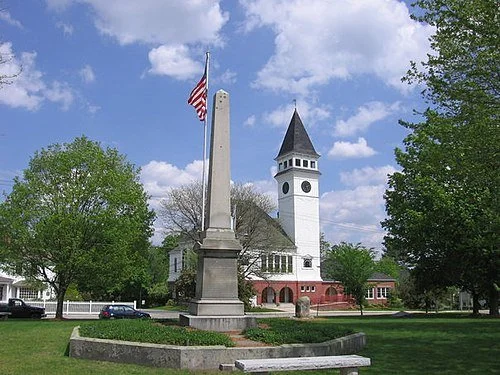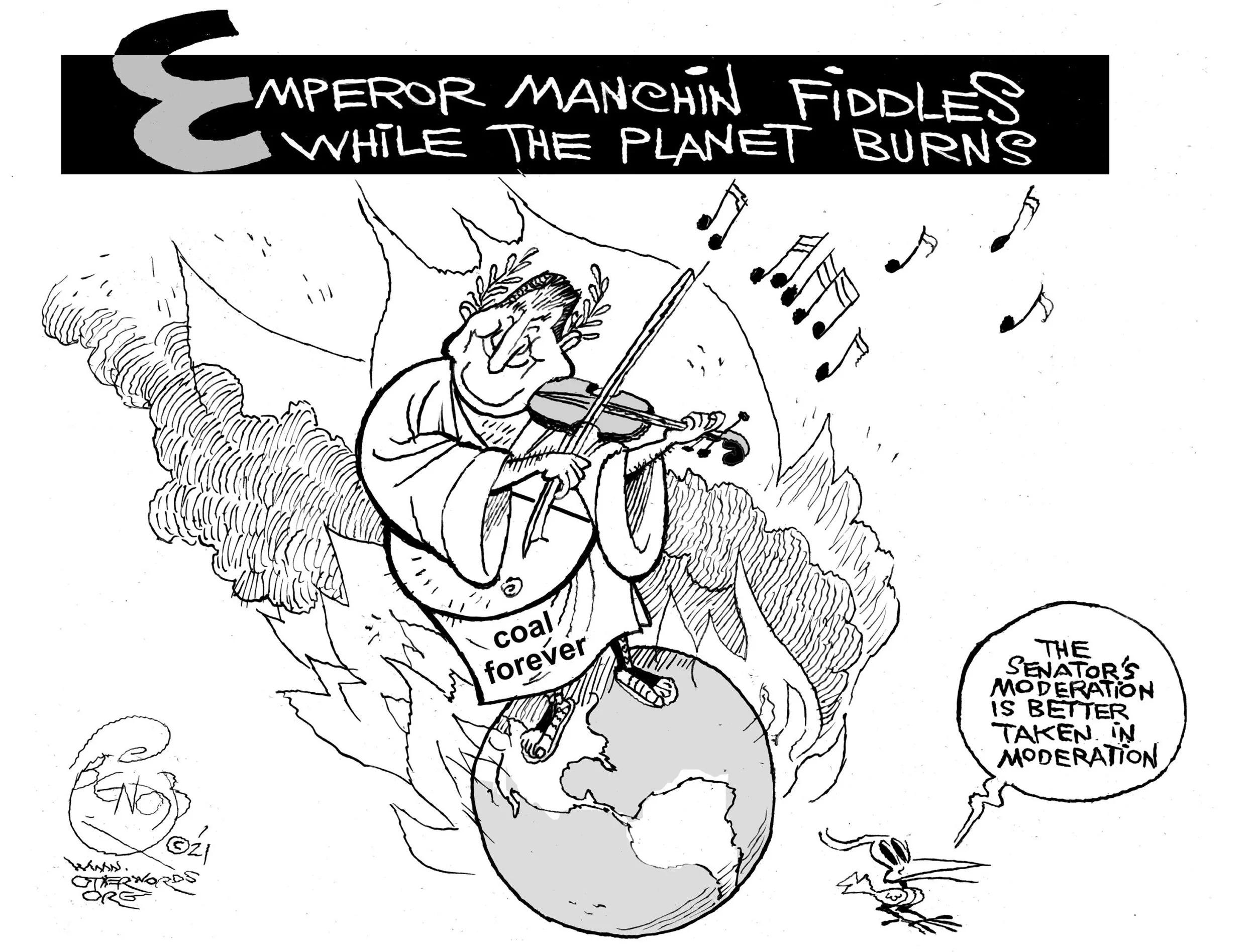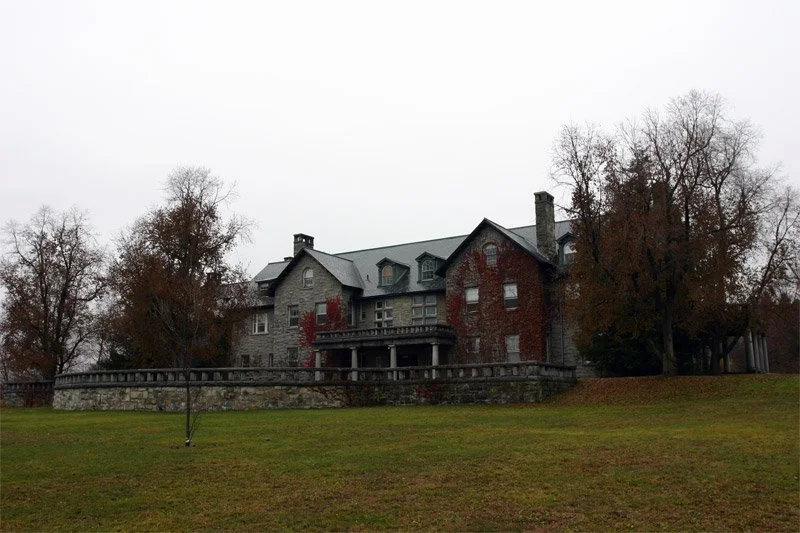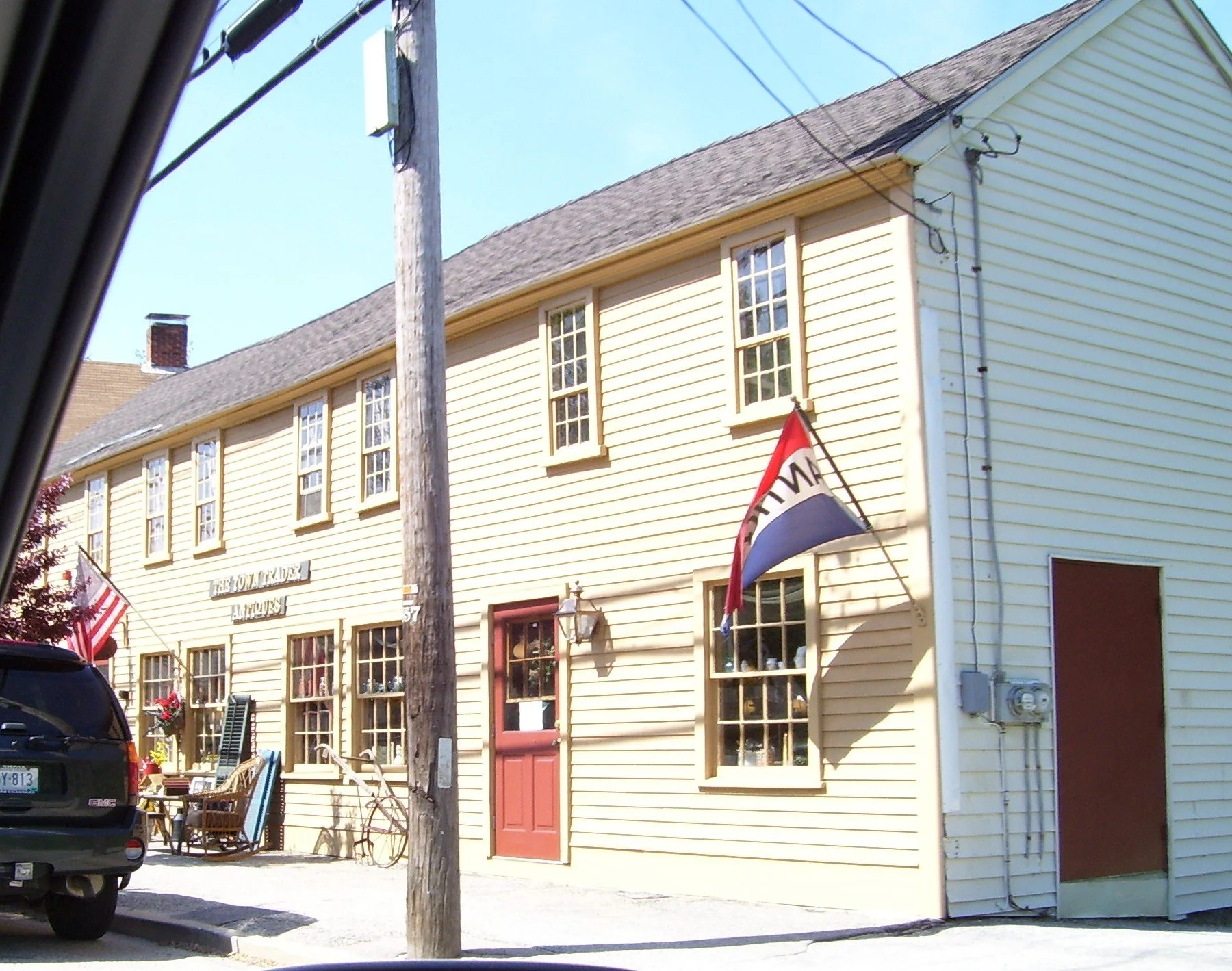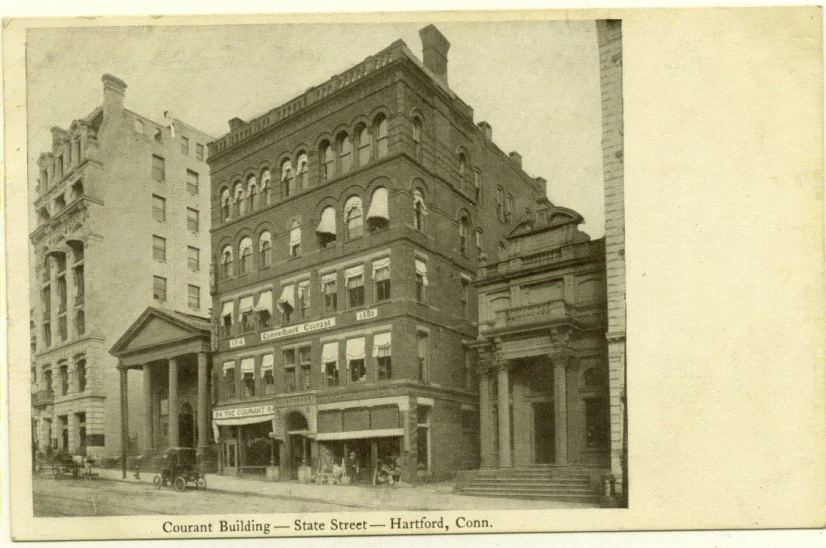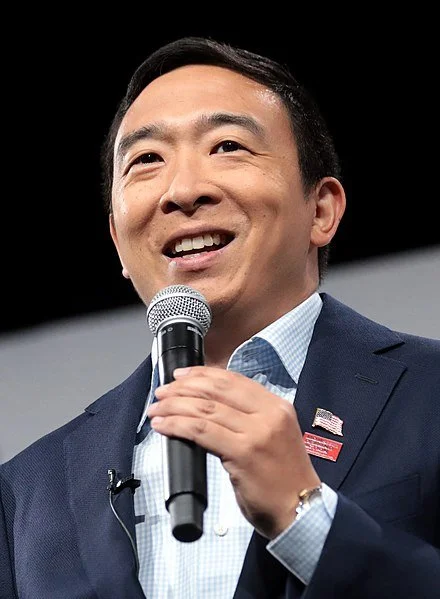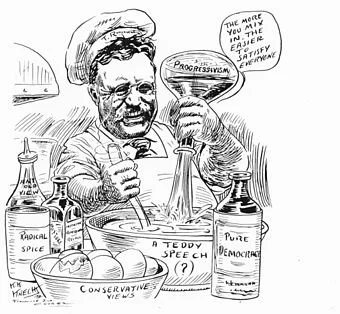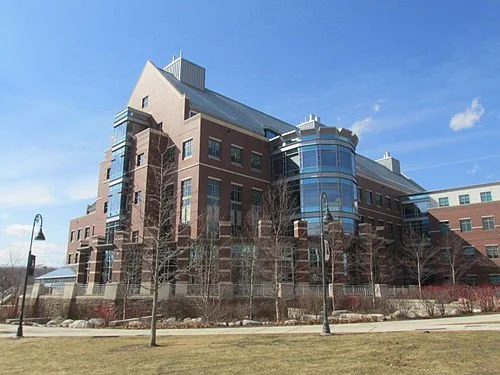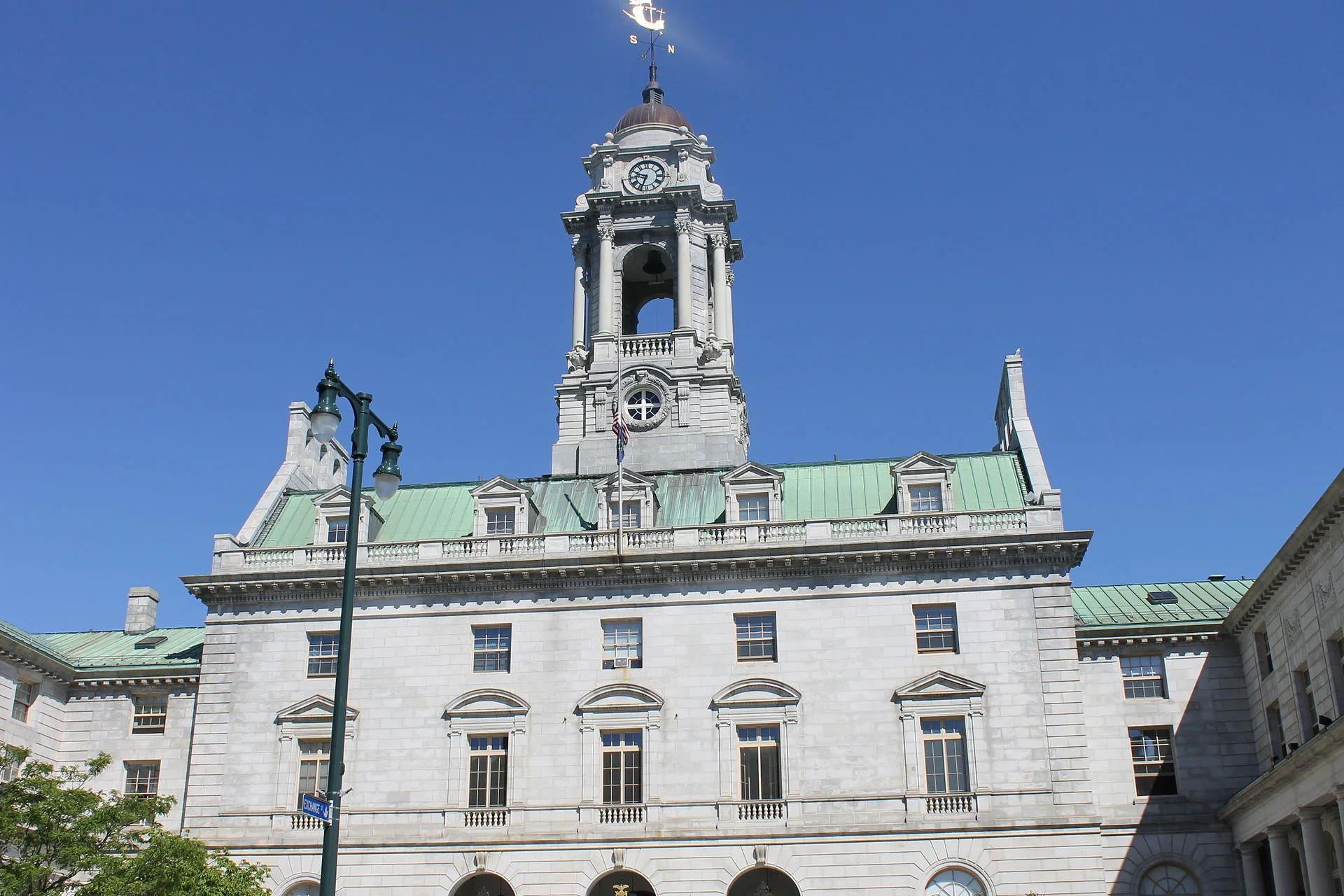
Ike: ‘Don’t join the book burners’
From Robert Whitcomb’s “Digital Diary,’’ in GoLocal24.com
The Massachusetts Institute of Technology has cancelled a lecture to have been given by distinguished University of Chicago geophysicist and climate scientist Dorian Abbot on whether the climates of planets outside of our solar system can sustain life. Crazily enough, Professor Abbot’s talk was prevented because some identity obsessives at MIT and elsewhere were angry that he criticized the current obsession of many colleges and universities with “diversity, equity and inclusion’’ -- in admissions and hiring – that is, as the institutions define those three qualities. He has suggested that they may be creating serious new inequities in the process. Maybe, maybe not.
But surely a university as rich and powerful as MIT, a place that like most institutions of higher education, is supposed to be devoted to free inquiry and debate, however unpopular (or untrendy), can do better than this. Pathetic!
I remember vividly how Dartmouth College allowed the racist and demagogic Alabama Gov. and presidential candidate George Wallace to speak at the college in 1967. Yelling protesters interrupted his speech, which he ended early, after which the car he was in was surrounded by protesters in what came to be called “The Wallace Riot.’’ But the college admirably defended his right to speak.
And, in a commencement address at the same college in 1953, President Eisenhower, a moderate Republican, told the graduates, in an attack on the McCarthyism that had infected his party:
“Don't join the book burners. Don't think you're going to conceal faults by concealing evidence that they ever existed. Don't be afraid to go in your library and read every book....”
That’s what you should hear at a university. (Ike, by the way, also served as president of Columbia University.)
And dragging in CVS
Look at the misleading graphics by hitting this link.
It’s not them….
Consumers should be aware of a brazen new scam going around. But then scams breed like flies in the Great Dismal Swamp of the Internet. This one leads off with “Congratulations! A CVSReward has arrived!’’
People are being sent emails that most people would associate with Rhode Island-based CVS Health, the pharmacy chain. It’s all under “CVSReward’’. The emails involve taking a survey for which some (or all?) respondents receive a “free gift” of, say, a watch. The recipients allegedly are only charged for shipping and handling.
But in fact, the recipients are charged for the full price of the watch, from an outfit identified as “Elite Horology,’’ plus of course “shipping and handling’’.
Do CVS, the Federal Trade Commission and other authorities know about this? Is there a security gap at CVS that lets these con men obtain customers’ email addresses?
Elite’s phone:
(phone: 888-534-9649)
Questions/comments on this site: Email rwhitcomb4@cox.net
Snarls at sunset
“Dog Park at Dusk” (watercolor on cradled board, encaustic), by Nancy Whitcomb, a Providence-based artist and member of New England Wax (newenglandwax.com)
Mystical physics
“The Mystic Alone Sees the Sun Aglow at Midnight,’’ (tar and gold leaf on canvas), by Christopher Volpe, in his show “Alchemy and After,’’ at Kingston Gallery, Boston, Nov. 3-28. Art New England says:
“Christopher Volpe’s paintings are stark conduits of the inherent oppositions between human beings and the natural world.”
He lives in Hollis, N.H.
Monument Square and Hollis Town Hall
Cross-species resemblance
“{During our hunting season} there’s a lot of noise, and now and then we hear a bullet slap into the clapboards, and once in a while we have to stop husking corn and go up in the woods and bring out a wounded hunter. Bringing out a wounded hunter wouldn’t be so bad if you didn’t have to listen to his companion say how he looked like a deer.”
— John Gould (1908-2003), Maine writer and humorist
20th Century poster
Even ‘real men’ will drive this Ford electric pickup truck
President Biden test-driving a pre-production Ford F-150 Lightning at Ford's Rouge Electric Vehicle Center, in Dearborn, Mich.
WEST WARWICK, R.I.
A huge swath of American drivers and the electric utility industry are waiting for a pickup truck. Not just any pickup truck, but one that could change the way we get around and, for many, how we work.
The pickup truck that’s expected to cause the Earth to move is the all-electric Ford F-150 Lightning. Electric utilities are keeping a wary eye on it and so is an enthusiastic public, jamming Ford’s order books ahead of the arrival of the first trucks next year. Year after year, the gasoline-fueled F-150 has been America’s best-selling truck both for work and pleasure.
In Texas and much of the West, the pickup truck is more than a vehicle: It is a symbol of a way of life and the freedom of the open road. It fits the cowboy inheritance.
But it is also a vehicle for work. Many kinds of work depend on pickup trucks and the Ford F-150 is the leader. Dodge Ram and Toyota Tundra are right behind Ford in this extremely competitive and profitable market.
Builders, carpenters, painters, farmers, delivery services, along with others beyond enumeration, use pickup trucks as the base of their business activity.
In Texas, they are preferred transportation for many individuals and families. With an extended cab, a pickup truck is a car with load-carrying capacity, having the ability to tow a boat, a horse trailer, or a camper with ease.
But they also are luxurious. The interior and the ride of the modern pickup truck is a thing of beauty, the automobile crafters’ art at its zenith. If you haven’t ridden in one, try it. You may never want to stoop to a car again or settle for an SUV, which is a halfway point to the glory of the American pickup truck.
With the Ford F-150 Lightning, workers will be able to plug such electrical equipment as saws, pumps and drills into their trucks.
But there is something else generating grand expectations: It is that the Lightning, if it works as advertised, will turn millions of skeptics into buyers.
All-electric pickup trucks will have a revolutionary impact, especially where driving a truck is the norm. For millions in the South and the West, the new pickup trucks will make electric vehicles socially acceptable, destigmatized. No longer will EVs be the effete preserve of the coastal elites.
That will be a breakthrough for EVs in general and will have a significant impact on the rate at which they are adopted and, consequently, on the rush to install charging infrastructure.
Still, there will be a range of issues. Ford says the basic Lightning (at about $42,000) will have a range of 230 miles; one with two batteries and additional horsepower, costing an additional $10,000, will get 300 miles. If the power-takeoff features are used for operating equipment, the mileage will come down.
Nonetheless, the Lightning is expected to streak across the automotive sky and supercharge the popularity of EVs. If the Lightning performs as expected, it will usher in a whole family of all-electric pickups. It will also speed an increase in demand, which the auto factories won’t be able to meet in the immediate future.
The utilities will have to get ready, too.
Texas, which has one of the largest, if not the largest, penetration of pickup trucks per capita, may be facing electricity shortages in the years ahead. Data companies have been moving to the state, putting a strain on electricity demand.
Andres Carvallo, a polymath friend, is a former electric utility executive and now is a principal at CMG Consulting and a professor at Texas State University. He points out the possible stress on electric utilities. “ERCOT [Electricity Reliability Council of Texas] is about an 80-gigawatt energy market at peak capacity today. There are around 22 million registered vehicles in Texas,” he says, “If they were all-electric and each had a 100-kWh battery, they would require 2,200 gigawatts to charge at the same time. So how do you manage the gap?”
Down the road, Texas and the rest of the country is going to need an awful lot of new, clean electricity.
Of course, there won’t be 100 percent deployment of electric vehicles for many decades, and they won’t all be charging at the same time. But this shouldn’t escape the electric utilities, which have to plan now for then.
When real men start driving all-electric rigs, things will happen — revolutionary things.
On Twitter: @llewellynking2
Llewellyn King is executive producer and host of White House Chronicle, on PBS. He’s based in Rhode Island and Washington, D.C.
‘The more barrels, the more Boston’
Boston Harbor and East Boston from State Street Block in mid-19th Century
— Photo by John P. Soule
"Boston, New York, Philadelphia, Charleston, New Orleans, and the rest, are the names of wharves projecting into the sea (surrounded by the shops and dwellings of the merchants), good places to take in and to discharge a cargo (to land the products of other climes and load the exports of our own). I see a great many barrels and fig-drums, piles of wood for umbrella-sticks, blocks of granite and ice, great heaps of goods, and the means of packing and conveying them, much wrapping-paper and twine, many crates and hogsheads and trucks, and that is Boston. The more barrels, the more Boston. The museums and scientific societies and libraries are accidental. They gather around the sands to save carting."
— Henry David Thoreau (1817-1862)
iberty Mutual, a NEC member, has given the Boston-based nonprofit Bridge Over Troubled Waters its largest ever grant of $2.5 million. This grant will help the organization combat homelessness amongst teenagers and young adults and expand its supportive-housing initiatives.
Bridge Over Troubled Waters is a nonprofit with an annual budget of over $10 million that provides services to over 2,000 people between the ages of 14-24 per year. In 2018, the nonprofit used a $1.1 million grant from Liberty Mutual’s foundation to open the “Liberty House” in Dorchester. “Liberty House,” one of the many housing initiatives of the organization, is home to young people who took advantage of other Bridge programming and are now living independently, responsible for paying monthly rent as well as other bills. With this latest grant, Bridge Over Troubled Waters will use the funds to expand the “Liberty House” arrangement, serve more homeless people, and upgrade computers and other equipment.
“I call them about legal work, real estate work … it’s not just financial,” Elisabeth Jackson, Bridge Over Troubled Waters’s executive director, said of Liberty Mutual. “It’s really understanding what we do and what we’re trying to do with our young people.”
The New England Council celebrates Liberty Mutual’s commitment to ending homelessness in the New England region.
Don Pesci: Simone Weil’s faith amidst the world’s agonies
Simone Weil (1909-1943)
VERNON, Conn.
When you were very young, in college, you ran across some authors, almost by accident, who took your breath away, so lucid and creative were their minds. And you promised yourself – someday I will return to your table and feast again on your wisdom. Will it be as nourishing then. you wondered, as it is now?
Simone Weil (pronounced VEY), whom Albert Camus thought was the most courageous person among the writers of his day, some of them, including Camus, literary giants, was hauled into the Christian faith by the following George Herbert poem:
Love (III)
Love bade me welcome. Yet my soul drew back
Guilty of dust and sin.
But quick-eyed Love, observing me grow slack
From my first entrance in,
Drew nearer to me, sweetly questioning
If I lacked any thing.
A guest, I answered, worthy to be here:
Love said, You shall be he.
I the unkind, ungrateful? Ah my dear,
I cannot look on thee.
Love took my hand, and smiling did reply,
Who made the eyes but I?
Truth Lord, but I have marred them: let my shame
Go where it doth deserve.
And know you not, says Love, who bore the blame?
My dear, then I will serve.
You must sit down, says Love, and taste my meat:
So I did sit and eat.
Weil, whose parents were of Jewish background, was strongly tempted to join the Catholic Church but resisted, she wrote in letters to Father Jean-Marie Perrin, a member of the Dominican order, because she felt her place was outside formal structures. She could best serve from the outside, looking in. And she loved what she saw.
Five years after her soul had been besieged by Christ, she knelt for the first time at the shrine in Assisi and persuaded herself at last to say the Pater Noster daily with such attention that she felt at each repetition Christ himself had “descended and took her.”
Her’s was a hard mind and brilliant, like diamonds. Her religious experiences did not – could not – separate her from the agonies of daily life. She was driven by the wild horses of her personality never to separate herself, in any fashion, from the misfortunes of others. For this reason, she refused for a time to leave Paris, then occupied by Nazis. She eventually joined Gustave Thibon, a lay theologian in charge of an agricultural colony in the south of France. Later, she would petition Charles De Gaulle to parachute her into Paris. He refused.
She worked in the vineyards with peasants until her health, always fragile, broke down. At first Thibon mistrusted her motives. She had already attained a reputation in Paris as a radical intellectual, and here she was perversely “returning to the soil,” eating what peasants ate, sleeping as they slept, clothed in poverty, and giving lectures to them on the Upanishads.
In time, Thibon became closely attached to her – as did many others with whom over the years she had established close contact. It was to Thibon that she entrusted her journals and occasional jottings, which he decided to publish after her death, caused in part by her refusal to eat any more than French soldiers had at their disposal. She died in exile, in London, in 1943.
Fr. Perrin, the anvil upon which she hammered out her thoughts on Christ, was a great friend and confidant. In the introduction to Waiting on God, a invaluable collection of Weil’s letters and essays, Leslie Fielder writes, “One has the sense of Simone Weil as a woman to whom ‘sexual purity’ is as instinctive as breath; to whom indeed any kind of sentimental life is scarcely necessary. But a few lines in one of her absolutely frank and unguarded letters to Father Perrin reveal a terrible loneliness which only he was able to mitigate to some degree and vulnerability which only he knew how to spare: ‘I believe that, except for you, all human beings to whom I have ever given, through my friendship, the power to harm easily, have sometimes amused themselves by doing so, frequently or rarely, consciously or unconsciously, but all of them at one time or another.…’”
For Weil, who suffered from crippling migraines for a good portion of her life, suffering is not a nullity. Nor was it a nullity for Christ pinned to a cross: “…persevering in our love, we fall to the point where the soul cannot keep back the cry ‘My God, my God, why hast though forsaken me?’ If we remain at the point without ceasing to love, we end by touching something that is not affliction, not joy, something that is the central essence, necessary and pure, something not of the senses, common to joy and sorrow – the very love of God… Extreme affliction…is a nail whose point is applied at the very center of the soul, whose head is all necessity spreading throughout space and time… He whose soul remains ever turned towards God, though pierced with a nail, finds himself nailed to the center of the universe…at the intersection of creation and its Creator…at the intersection of the arms of the Cross.”
It is nearly impossible for the postmodern, materialistic mind to believe that such airy effusions are other than poetry, and dangerous poetry at that. But if postmodernism wishes to argue the point with Weil, its arguments will lack conviction; for Weil’s larger point is that the believing Christian is, in truth, a slave to the truth, a convict of Godly love. To attend is to love.
It may shock the shriveled, inattentive mind of postmodern academics that Herbert’s poem, which opened to Weil a window on the splendor of Christ the criminal, is not poetry either. It is the life-giving breath of God.
Don Pesci is a Vernon-based columnist.
‘Embracing chaos to make art’
“Chaos Gives Birth To Being’’ (oil on canvas), by Daniel Heyman, in his show “Summons,’’ at Cade Tompkins Projects, Providence, Oct. 30-Dec. 31.
Kathleen Tolan in the “Summons’’ catalog essay, writes:
“{T}h giant, squatting on bright green rocks in a blue sea, his body covered with babies crawling on him, being born by him. He points up at a bunch of purple grapes. I think of Dionysus, of the playful lover of life, and I think of the necessity of embracing chaos to make art.’’
The gallery says:
“Daniel Heyman is an artist whose work in drawing, printmaking and painting directs the viewer's attention to contemporary social and political issues. Deeply interested in narrative, he uses images to tell stories that combine a love of history and myth in an effort to provoke discussion and empathy. In his recent “Summons’’ series, Heyman emphatically returns to images without words. His previous effort, the monumental woodcut “Janus’’ from 2019-2020, represents time as an endless string of birth, renewal and death for creatures and ideas. Here, even the very human act of making culture is seen as both creative and destructive, signaling the profound influence Japanese art and culture has had on his work.’’
Daniel Heyman lives in Tiverton, R.I., partly a Providence and Fall River suburb and partly an affluent summer place with a beautiful shoreline and some farms, too.
The Union Public Library, part of the Tiverton Four Corners Historic District, has been operating since 1820.
View from Ft. Barton, in Tiverton
‘Overturns laws of space and light’
Early fall Foliage in the Missisquoi National Wildlife Refuge, on the eastern shore (the Vermont side) of Lake Champlain
What’s left of late-fall foliage outside Jennings Hall, Bennington (Vt.) college's music building
— Photo by Jared C. Benedict
“In the same way that serious cold seems to invoke a new set of physical laws — altering the way sound carries, making the air less elastic — the {autumn} coloring of maples and hickories and oaks overturns laws of space and light that have been in force since spring.’’
Michael Pollan (born 1955) in Second Nature: A Gardener’s Education. A graduate of Vermont’s Bennington College, he’s an author, journalist and professor best known for food-and-environment-related writing.
Liberty Mutual grant will help young homeless people in Boston
“Liberty House’’, in Boston’s Dorchester neigborhood
BOSTON
From The New England Council (newenglandcouncil.com)
“Liberty Mutual, the big Boston-based insurance company, has given the Boston-based nonprofit Bridge Over Troubled Waters its largest ever grant — $2.5 million. This grant will help the organization combat homelessness amongst teenagers and young adults and expand its supportive-housing initiatives.
“Bridge Over Troubled Waters is a nonprofit with an annual budget of over $10 million that provides services to over 2,000 people between the ages of 14-24 per year. In 2018, the nonprofit used a $1.1 million grant from Liberty Mutual’s foundation to open the ‘Liberty House,’ in Dorchester. ‘Liberty House,’ one of the many housing initiatives of the organization, is home to young people who took advantage of other Bridge programming and are now living independently, responsible for paying monthly rent as well as other bills. With this latest grant, Bridge Over Troubled Waters will use the funds to expand the ‘Liberty House’ arrangement, serve more homeless people, and upgrade computers and other equipment.
“‘I call them about legal work, real estate work … it’s not just financial,’ Elisabeth Jackson, Bridge Over Troubled Waters’s executive director, said of Liberty Mutual. ‘It’s really understanding what we do and what we’re trying to do with our young people.’
More than random
“Random Order” (acrylic paint on aluminum), by Ed Andrews, in his show “Transplant,’’ at Boston Sculptors Gallery, through Oct. 31.
The gallery says:
“Andrew's battles with leukemia, with the environment, with movement are defined against a traditional dictionary definition and crafted into sculptures of bronze, aluminum and stainless steel. The process is meticulous and intricate — cutting the metal into shapes, and hand painting and etching the material with acid to create his haunting patterns.’’
Mr. Andrews, a native of the Midwest., now lives in the semi-rural town of Glocester, R.I.
Antique store in the Glocester village of Chepachet, a farming community into the 20th Century
— Photo by Swampyank
Chris Powell: Why no one outbid the asset-stripper Alden for famous newspapers
MANCHESTER, Conn.
More complaining about Alden Global Capital's dismemberment of the storied newspapers it recently acquired from the Tribune chain appeared this month in a long and -- to journalists, anyway -– infuriating essay in The Atlantic magazine by its reporter McKay Coppins. {Alden, an asset-stripping operation, also owns the Boston Herald.}
This dismemberment, Coppins noted, includes the Chicago Tribune's former headquarters, the landmark Tribune Tower, which has been converted into an apartment building.
But at least what remains of the newspaper still has modest offices in an industrial area across town near the newspaper's press. Another former Tribune property, The Hartford Courant, no longer has even that much. Somehow Alden acquired the Courant's headquarters on Broad Street in Hartford and kicked the newspaper out even before acquiring the Courant itself and the other Tribune papers. The Courant now seems to be entirely a work-from-home operation, and like several other Connecticut papers, including the Journal Inquirer, now is printed by the Springfield Republican. The Courant's address has become a post office box.
From Los Angeles to Chicago to Baltimore to New York and to Hartford, how the mighty have fallen, though the journalists who remain in the formerly great papers of old soldier on bravely and sometimes well.
Of course, the dismemberment of the former Tribune papers is just part of the decline of serious state and local journalism generally. But while Alden may seem especially predatory in its liquidations, the company is not a cause but just a symptom of what has gone wrong with the news business -- and not just the rise of the Internet and the transfer of advertising there but, more so, the public's loss of interest in state and local news.
This is in large part a matter of declining demographics.
After all, newspapers survived major challenges from competing new technologies before -- first radio and then television, whose main products are entertainment, not news, and whose state and local news reporting always have been and remain weak. Even now anyone who wants to be well informed about state and local government and community events and to participate in public life has to subscribe to a newspaper.
While some places -- including Connecticut -- now have a few Internet sites providing state and local news, most are niche operations that don't attempt to serve any area comprehensively. They concentrate on government and their audiences tend to be smaller even than newspaper audiences. They are not any more profitable than most newspapers, and many are operated as nonprofits supported by donations, if sometimes large ones from foundations. This method of operation is hardly a business plan and may subject the internet sites to more political pressures than advertising subjects newspapers to.
But if more people wanted state and local news and commentary, newspapers and news-based Internet sites would have more readers, and as their audiences grew, they might become profitable from increased advertising.
The movement to convert newspapers to nonprofits and to operate Internet news sites that way presumes that substantial interest from the public is no longer attainable.
It is hard to argue with that presumption. After all, throughout the country and even in Connecticut most young people, the products of social promotion, graduate from high school without ever mastering basic math and English. Most gain little if any knowledge of the country's history and civics. Even in Connecticut, a comparatively wealthy and well-educated state, the typical high school graduate or college freshman cannot identify the three branches of government. (You know: the lawyers, the teacher unions, and the liquor stores.)
That is, most young people are not being prepared to become citizens in a democracy, much less followers of state and local news.
This may be the underlying reason that Alden is liquidating so much of the former Tribune papers, draining away their capital, like their real estate, and why no one outbid Alden for the Tribune papers with the confidence that solid journalism could be made profitable again. For the future isn't just disruptive technological change but also social change, which may be far more disruptive.
Chris Powell is a columnist for the Journal Inquirer, in Manchester.
An earlier Hartford Courant Building, in about 1900
Philip K. Howard: Reframing Andrew Yang’s ideas for a new political party
Andrew Yang
Every so often, a citizen emerges to challenge the political establishment. Ross Perot’s 1992 presidential run drew on a public hunger for a new approach; he received 20 percent of the vote. In 2016 Donald Trump steamrolled traditional Republican candidates and changed the party’s face to his own. Andrew Yang is more a firecracker than a depth charge, but he has captured the public imagination with his refreshing candor and fearlessness.
Unlike Perot or Trump, Yang came from nowhere—no public reputation, no big money, no access to any part of the establishment. Yet, by force of his personality, Yang now has a pedestal in the political landscape. In his new book, Forward: Notes on the Future of Our Democracy, Yang plants the flag of a new political party. He argues that, though Americans are not as polarized as polls suggest, neither existing party will address the legitimate needs of the other side. He also says that the two parties are comfortable with their duopoly of failure—first you fail, then I fail—and therefore will not support disruptive electoral reforms such as ranked-choice voting.
Yang is not the first to suggest that our two political parties no longer represent most Americans. Frank DiStefano, in his recent essay in these pages, argued that the parties are on “a locked-in path to destruction and decline.” In my 2019 book, Try Common Sense, which Yang cites, I said that each party’s outmoded ideology precludes the overhauls needed to respond to public frustration.
It is no surprise that a plurality of voters now identifies as “independent” or as a member of a third party. But the electoral machinery makes it difficult for a would-be candidate to operate outside the two parties; and the primary system promotes extremists, not problem solvers.
Yang’s idea of a party is, initially, not one with its own candidates but a centrist movement that exercises influence on candidates from both parties. As DiStefano elaborates it, a movement that captures public imagination can eventually take over or supplant one of the parties. The challenge is to galvanize public support for this type of new overhaul movement in a political environment like today’s, which breeds deadlock, not solutions. While many Americans might be receptive to a new party, the current political shouting match has left them exhausted and cynical. There is a huge gulf today between wanting change and rolling up your sleeves to force change.
So, what does it take to engender the excitement needed for a new movement? Yang proposes a six-point platform for his Forward Party:
1. Ranked-choice voting, with open primaries: These arrangements would reduce the stranglehold of the two parties and defang the extremists.
2. Fact-based governing: The idea here is to evaluate programs objectively.
3. Human-centered capitalism: Yang wants to re-center business around employees and communities, not just owners.
4. Effective and modern government: Here Yang embraces the need to “fix the plumbing” of paralyzed government.
5. Universal Basic Income: Giving Americans $1,000 per month was Yang’s signature proposal in his presidential campaign—a proposal that was validated, he argues, by the Covid relief payments.
6. Grace and tolerance: Yang urges Americans to be more accepting of each other, not stay locked in a battle of identity politics.
By opening the door to a new party, Yang once again reveals solid leadership instincts. But a new movement requires a tougher, more focused platform. A list of centrist do-good reforms is unlikely to elicit the public passion needed to dislodge the current parties. Yang himself is a bold and disarming figure; his party must be as well. A new party needs a clarion call that can galvanize popular support—as the Progressive Movement did, for example, with its vision of public oversight of food and fair practices, or the New Deal with its idea of social safety nets. Successful movements also energize public passion by fingering villains, as the Tea Party and Occupy Wall Street did.
To get Americans out of their easy chairs, the new party must light a bonfire. Yet Yang’s platform is soporific, with no inspirational theme or evil targets. What’s the vision? Who are the enemies? Here is the way I would reframe Yang’s proposed Forward Party.
First, the clarion call for a new way of governing: Responsibility for America. Americans have lost their sense of self-determination. We should be re-empowered to make a difference. Revive individual responsibility at all levels of society. Replace mindless bureaucracy with accountability for results. Teachers should be free to do their best, with authority to maintain classroom discipline. Principals should be free to hold teachers accountable, and the same should hold true all the way up the chain of responsibility. Officials must be free to authorize action within a reasonable timeframe; and they, too, must be accountable up the chain of responsibility. Mayors and police chiefs should have authority to manage the police force and other departments, including authority to promote public employees who do their jobs and fire those who don’t.
Reviving human responsibility requires overhauling government’s operating systems, replacing thick rule books with simpler goals and principles managed by people who take responsibility for themselves and are accountable to others. This is not so hard: It is far easier to agree on goals than to bicker over endless details of implementation. Modern American government has become basically a bad form of central planning, tying Americans into knots of red tape. Ask any teacher or doctor. Restoring responsibility would empower officials and citizens to govern better and adapt to local needs.
Second, identify enemies and attack them. Powerful forces will resist a movement to revive responsibility. I see two main villains: public unions, which exist to block all accountability, and the political parties themselves, which have become organs of identity politics and special interests. It is impossible to fix broken government or revive a shared sense of national purpose without defeating these villains.
Public unions have made government unmanageable and must be outlawed. Public unions have preempted democratic governance. Citizens elect leaders to run the police force and schools, but these leaders have no authority to fulfill this responsibility. The Minneapolis mayor appointed the police chief; but under the police union’s collective-bargaining agreement, the mayor lacked authority to fire the rogue cop who killed George Floyd—or even to reassign the officer. Unlike private unions, which are dependent on the success of a private enterprise, public unions retain power even where they cause government to fail miserably.
Democracy is supposed to be a process of giving officials responsibility and holding them accountable. But public unions have broken the links: Today, there is zero accountability in the daily operations of American government. Without accountability, rote compliance with the thick rule books replaces individual responsibility for results. The bottom line today is a government bogged down in a bureaucratic jungle of dictates and entitlements. Nothing much works sensibly or fairly because no one is empowered to make things work.
As for political parties, they compete through failure, not achievement. Party leaders have basically given up on reforming government. Instead, they take turns in power pointing to the failures of the incumbent. In 2016 presidential candidate Donald Trump tapped into broad public frustrations with Washington. Trump’s erratic leadership opened a door through which Joe Biden entered, offering sanity. But Biden’s failures of execution in Afghanistan and on the Mexican border now empower Republicans to go on the attack and prepare for their own return.
This spiral of negative democratic competition is accelerated by the rise of extremism: Each side stokes fear of the extremists on the other (“Defund the police!” “Stop the steal!”). Actually fixing government is no longer the way the parties compete.
Each party will aggressively resist reforms that would revive responsibility. Public unions have a stranglehold on the Democratic Party. Identity groups on the left will resist any accommodation of other points of view, or what Andrew Yang calls “grace and tolerance.” Republicans have become a party of nihilism and offer no discernible governing vision. They will rail against any reform that empowers public officials, opens elections to moderate candidates, or imposes taxes for public projects.
The existing political parties are the problem, not the path to a solution. The new party envisioned by Yang must ultimately supplant one of them. The new party must ask its supporters to defeat the defenders of the status quo: They are not the agents but the enemies of a successful future. Generating public enthusiasm will require not a laundry basket of reforms but a spear with a sharp point. No matter which party is in charge, focus on its virtually unblemished recent record of failure.
America needs a new party. Its vision must be condensed into a new governing principle that resonates with American values and represents a clean break from bureaucratic paralysis—a principle like human responsibility, which can guide an overhaul of all levels of government.
The current state of American politics has squeezed all energy and hope out of our democracy. There’s no oxygen to serve as fuel for anyone who wants to do what is needed. Yang has cracked open a door, but we need a new vision to open it wide and attract a public enervated by decades of failure.
Philip K. Howard, a New York-based lawyer, author, civic and cultural leader and photographer, is founder of the government- and legal-reform nonprofit organization Common Good (commongood.org) and author, most recently, of Try Common Sense: Replacing the Failed Ideologies of Right and Left (2019). This essay first appeared in American Purpose.
Theodore Roosevelt, the Progressive Party’s (aka “Bull Moose Party’’) presidential candidate in 1912, mixing ideologies in his speeches in this 1912 editorial cartoon by Karl K. Knecht (1883–1972) in the Evansville (Ind.) Courier. The former president’s running mate was California Gov. Hiram Johnson.
'Fear has softened'
”So often, so long I have thought of death
That the fear has softened. It has worn away.
Strange. Here in autumn again, late October,
I am late too, my woodshed still half empty,
And hurriedly I split these blocks in the rain,
Maple and beech….”
— From “Song: So Often , So Long Have I Thought,’’ by Hayden Carruth (1921-2008), native of Connecticut and long-time resident of Johnson, Vt.
Fog in the Lamoille River valley in Hyde Park, Vt., near Johnson
Battaglia/Corcoran/Rhodes and Simon: Adopting cheaper college learning materials
The formidable-looking Science Building at Eastern Connecticut State University, in Willimantic
From The New England Journal of Higher Education, a service of The New England Board of Higher Education (nebhe.org)
The 17-institution Connecticut State Colleges & Universities System (CSCU) formed a systemwide open educational resources (OER) Council in 2017 that was primarily focused on the adoption of no-cost or low-cost (NOLO) course materials as a means to provide equitable access to learning materials.
Our CSCU consortium of library directors partnered with the OER Council to construct a Web site, OpenCSCU, providing curated OER, a support network and a faculty-recognition program. The OER Council also has hosted annual OER workshops. Additionally, the CSCU system office funded a “mini-grant” program to further assist adoption. Much of the council’s focus and its connected OER efforts have been centered on equitable access to affordable learning materials. Over time, the council has expanded its focus to include open practices as a critical component to diversity, equity and inclusion in support of student success.
Even as we made strides in expanding the reach and focus of our OER efforts, the council recognized a communication gap persisted. The primary means of disseminating information from the council had been its representatives. We recognized that our institutions may have been at varying levels of engagement with OER and that our council representatives may have had competing priorities. It became clear that to better serve our institutions we needed to create a centralized communication channel to provide broader engagement and reach. Enter the blog.
With the OpenCSCU site established as a clearinghouse for OER-related information, it was a natural progression to take advantage of the existing technology for this new communications effort. Recognizing the limitations of our previous communications methods, which relied heavily on email, the council sought to better utilize the OpenCSCU Web site feature set. The website runs off the Springshare LibGuides platform and provides a blog option that is flexible and visually appealing. Creating posts with persistent URLs (such as “/blog” vs. system-generated code) and a consistent location would allow us to easily disseminate up-to-date content more widely beyond the confines of email, such as through social media channels and other means of link sharing.
The CSCU OER Council formed a task force to explore how the blog could support the council’s goals of broader dissemination of open practices, recognizing the work of practitioners and advocates and growing the open community.
Creating the blog
As the task force began its work, we felt compelled to establish guiding principles for this initiative. We wanted our OER efforts to be deeply rooted in equity as well as community members’ innovations and successes. A consistent piece of feedback we had received from our previous efforts was a call for more perspectives from faculty and less from staff and administration. (After all, our faculty are the primary audience.) As a result, we decided early on that our featured posts would focus on faculty practitioners and their application of open practices and principles within their courses but also would include perspectives of students, staff and administration.
The lengthiest discussions centered around determining editorial standards for the blog. The task force looked to established academic blogs for insights and inspiration. The New England Board for Higher Education and its New England Journal of Higher Education provided some invaluable guidance to help us move forward. The WICHE Cooperative for Educational Technologies (WCET) also shared documented standards for its long-running blog site, Frontiers.
As a result, our standards focused on acceptable content and tone, readability and accessibility, format, media usage, licensing and the editorial review process. As OER advocates, we emphasized the requirement of open licensing for submitted content.
The OER Council’s blog task force made a conscience decision to solicit selected authors versus issuing a broad call. Our intent was to recruit three to four innovative faculty to share their stories in Year One of launching this new initiative. This approach ensured that we had a full year of highly relevant content. In future years, we will be providing an online form for interested individuals to submit proposals.
In determining the quarterly release schedule, we considered how our featured blog posts might correspond with national and regional events such as the Open Ed Conference, Open Ed Week, and the Northeast OER Summit, to coincide with heightened interest in OER. In addition to our invited authors, we agreed that we would supplement the quarterly features with timely and relevant news and events, spotlighting professional development and grant opportunities
The future of the blog
On Sept. 21, the OpenCSCU Blog was launched. Its featured post was entitled “Presenting and Promoting Open Pedagogy Through Different Frameworks” by Nicolas Simon, an assistant professor at Eastern Connecticut State University who was joined by three of his students: Tara Nguyen, Jean Rienzo and Maya Vanderberg. With feedback still coming in, the editorial board has shifted to planning the next featured post and identifying newsworthy items to share in the interim.
We plan to present practical examples that can be replicated by others, including an in-depth look at open pedagogy, regaining intellectual property rights, and publishing an open text. Looking beyond the next scheduled releases, the editorial board in conjunction with the full OER Council have started to explore the next steps for the blog. In the short term, the editorial board will establish and publish criteria for selection. In the long term, we will explore how the blog can facilitate two-way conversations.
Overall, we intend to provide guidance and support to readers by demonstrating the value of open content and practices to better serve student success. As we share more content, we hope that our reader base will grow and that our blog posts will encourage conversation and innovation in open education. We hope to generate broader awareness of open practices and build a community of practice that not only validates and normalizes open pedagogy, but also inspires new efforts.
Hayley Battaglia is the serials & electronic resources librarian at Hilton C. Buley Library of Southern Connecticut State University. She is a member of the CSCU OER Advisory Council, chair of the OER Committee at Buley Library, a graduate of the Creative Commons Certificate Course and editor of the OpenCSCU Blog.
Kevin Corcoran is the executive director for digital learning at the Connecticut State Colleges & Universities System. He currently chairs the CSCU OER Advisory Council and the statewide Connecticut OER Coordinating Council and serves on the NEBHE OER Advisory Board.
Eileen Rhodes currently serves as the interim director of the Connecticut State Community College Library. Prior to this, she served as director of library services at Capital Community College in Hartford, Conn., for more than seven years. She is an OER advocate, initiating a “NOLO” labeling program at her college to identify courses with no-cost/low-cost course materials.
Nicolas P. Simon is an assistant professor of sociology at Eastern Connecticut State University. The supplemental works co-authored with his students have been featured in Introduction to Sociology, third edition, published by OpenStax.
Patty Wright: In Maine, vaccine mandate further stresses EMS service
Around turn of the 20th Century, view of Waldoboro looking northeast across Mill Street, the upper falls and Elm Street. Trees now cover much of that open land, which grazing animals had used.
— Original source: Robert N. Dennis collection of stereoscopic views.
Via Kaiser Health News
(kaiserhealthnews.org)
On a recent morning, Jerrad Dinsmore and Kevin LeCaptain of Waldoboro EMS in rural Maine drove their ambulance to a secluded house near the ocean, to measure the clotting levels of a woman in her 90s.
They told the woman, bundled under blankets to keep warm, they would contact her doctor with the result.
“Is there anything else we can do?” Dinsmore asked.
“No,” she said. “I’m all set.”
This wellness check, which took about 10 minutes, is one of the duties Dinsmore and LeCaptain perform in addition to the emergency calls they respond to as staffers with Waldoboro Emergency Medical Service.
EMS crews have been busier than ever this year, as people who delayed getting care during the covid-19 pandemic have grown progressively sicker.
But there’s limited workforce to meet the demand. Both nationally and in Maine, staffing issues have plagued the EMS system for years. It’s intense work that takes a lot of training and offers low pay. The requirement in Maine and elsewhere that paramedics and emergency medical technicians be vaccinated against covid is another stress on the workforce.
Dinsmore and LeCaptain spend more than 20 hours a week working for Waldoboro on top of their full-time EMS jobs in other towns. It’s common in Maine for EMS staffers to work for multiple departments, because most EMS crews need the help — and Waldoboro may soon need even more of it.
The department has already lost one EMS worker who quit because of Maine’s COVID-vaccine mandate for health-care workers, and may lose two more.
The stress of filling those vacancies keeps Town Manager Julie Keizer awake at night.
“So, we’re a 24-hour service,” Keizer said. “If I lose three people who were putting in 40 hours or over, that’s 120 hours I can’t cover. In Lincoln County, we already have a stressed system.”
The labor shortage almost forced Waldoboro to shut down ambulance service for a recent weekend. Keizer said she supports vaccination but believes Maine’s decision to mandate it threatens the ability of some EMS departments to function.
Maine is one of 10 states that require health-care workers to get vaccinated against covid or risk losing their jobs. Along with Oregon, Washington and Washington, D.C., it also explicitly includes the EMTs and paramedics who respond to 911 calls in that mandate. Some ambulance crews say it’s making an ongoing staffing crisis even worse.
Two hundred miles north of Waldoboro, on the border with Canada, is Fort Fairfield, a town of 3,200. Deputy Fire Chief Cody Fenderson explained that two workers got vaccinated after the mandate was issued in mid-August, but eight quit.
“That was extremely frustrating,” Fenderson said.
Now Fort Fairfield has only five full-time staffers available to fill 10 slots. Its roster of per-diem workers all have full-time jobs elsewhere, many with other EMS departments that are also facing shortages.
“You know, anybody who does ambulances is suffering,” said Fenderson. “It’s tough. I’m not sure what we’re going to do, and I don’t know what the answer is.”
In Maine’s largest city, Portland, the municipal first-responder workforce is around 200 people, and eight are expected to quit because of the vaccine mandate, according to the union president for firefighters, Chris Thomson.
That may not seem like a significant loss, but Thomson said those are full-time positions and those vacancies will have to be covered by other employees who are already exhausted by the pandemic and working overtime.
“You know, the union encourages people to get their vaccine. I personally got the vaccine. And we’re not in denial of how serious the pandemic is,” Thomson said. “But the firefighters and the nurses have been doing this for a year and a half, and I think that we’ve done it safely. And I think the only thing that really threatens the health of the public is short staffing.”
Thomson maintains that unvaccinated staffers should be allowed to stay on the job because they’re experts in infection control and wear personal protective equipment such as masks and gloves.
But Maine’s public safety commissioner, Mike Sauschuck, said EMS departments also risk staff shortages if workers are exposed to covid and have to isolate or quarantine.
“Win-win scenarios are often talked about but seldom realized,” he said. “So sure, you may have a situation where staffing concerns are a reality in communities. But for us, we do believe the broader impact, the safer impact on our system is through vaccination.”
Some EMS departments in Maine have complied fully with the mandate, with no one quitting. Andrew Turcotte, the fire chief and director of EMS for the city of Westbrook, said all 70 members of his staff are now vaccinated. He doesn’t see the new mandate as being any different from the vaccine requirements to attend school or enter the health care field.
“I think that we all have not only a social responsibility but a moral one,” Turcotte said. “We chose to get into the health care field, and with that comes responsibilities and accountabilities. That includes ensuring that you’re vaccinated.”
Statewide numbers released last week show close to 97% of EMS workers in Maine have gotten vaccinated. But that varies by county: Rural Piscataquis and Franklin counties reported that 18% and 10% of EMS employees, respectively, were still unvaccinated as of mid-October.
Not all EMS departments have reported their vaccination rates to the state. Waldoboro is in Lincoln County, where only eight of 12 departments have reported their rates. Among those eight, the rate of noncompliance was just 1.6%.
But in small departments like Waldoboro, the loss of even one staff member can create a huge logistical problem. Over the past few months, Waldoboro’s EMS director, Richard Lash, started working extra long days to help cover the vacancies. He’s 65 and is planning to retire next year.
“I’ve told my town manager that we’ll do the best we can do. But, you know, I can’t continue to work 120 hours a week to fill shifts,” said Lash. “I’m getting old. And I just can’t keep doing that.”
Patty Wright is a reporter for Maine Public Radio.
This story is from a reporting partnership that includes Maine Public Radio, NPR and KHN.
In Fort Fairfield, Aroostook Valley Country Club entrance showing U.S. and Canadian flags and border marker
'...and dangerous'
Closeup of Portland City Hall, built in 1909-1912. Like many of the city’s downtown buildings, it’s made of granite, in part as a result of the Great Fire of 1866, which destroyed much of downtown Portland. Granite doesn’t burn!
— Photo by Billy Hathorn
“I felt fighting discrimination was the most important thing I could do as an elected official. I said then and I believe now that any doctrine of superiority is scientifically false, moral condemnable, socially unjust and dangerous.’’
— Gerald E. Talbot (born 1931) a civil rights leader, author and politician from Portland, Maine. Talbot was the first Black legislator in the state, the founding president of the Portland chapter of the National Association for the Advancement of Colored People (NAACP), and was president of the Maine State Board of Education under Gov. Joseph Brennan. In 2020, the Riverton elementary school in Portland was renamed the Gerald E. Talbot Community School.







